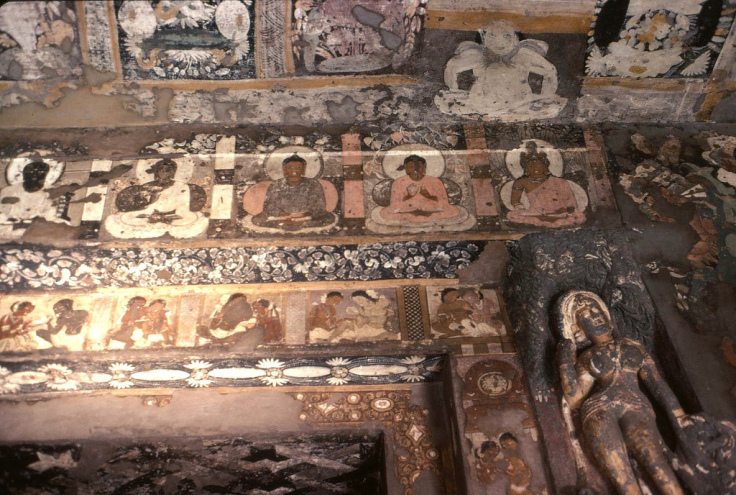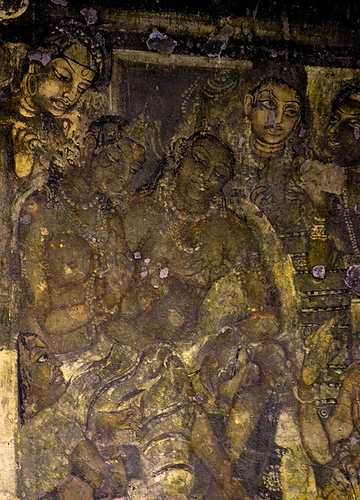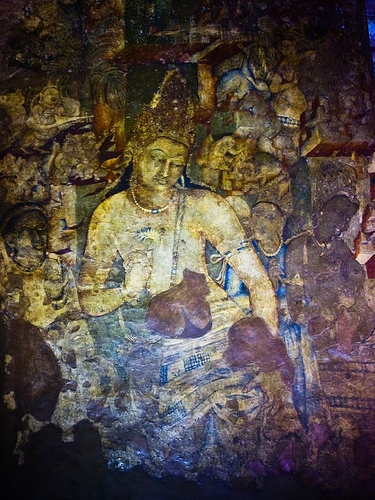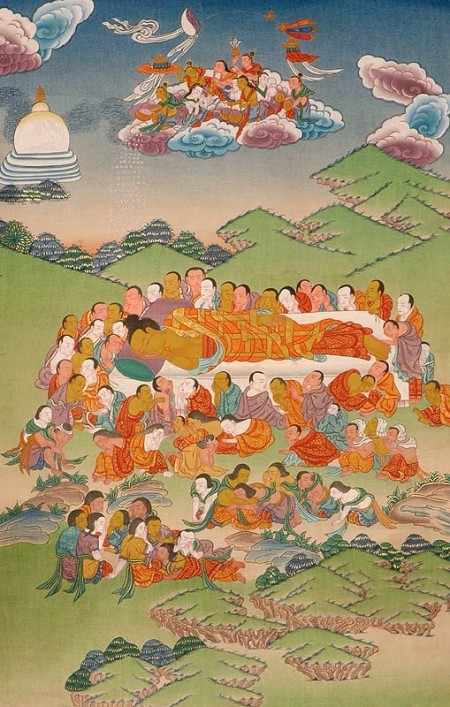Racism in the Early Saṅgha and The First Black Monk.pdf (293.8 KB)
##Racism in the Early Saṅgha and the First Black Monk
Note: What follows is extracted from the pdf file in the original post.
In reading Bhante’s essay on Mahākappina, I was struck by the descriptions, not of Mahākappina so much, but by those of Lakuṇṭaka Bhaddiya (“Bhaddiya the Dwarf”) as "ugly (dubbaṇṇaṃ), unsightly (duddasikaṃ), deformed (okoṭimakaṃ), and despised by the mendicants (bhikkhūnaṃ paribhūtarūpaṃ). Bhante is absolutely right in highlighting connections, for it is indeed “one of the few suttas that has a similar form” to SN 21.11; however, there’s a further parallelism here between SN 21.11 and SN 21.6 of which I would like to make note.
The description of Lakuṇṭaka Bhaddiya’s appearance is noteworthy in its similarity to traditional descriptions of the appearance of famed storyteller, Aesop. For example, writing in the 17th century, British author, printer, bookseller, and proto-historiographer, Nathaniel Crouch had this to say about the satirizing fabulist:
“What Aesop was by birth, authors don’t agree, but that he was of a mean condition, and his person deformed to the highest degree, is what all affirm: he was flat-nos’d, hunch-back’d, bloober-lipp’d, jolt-headed: his body crooked all over, big belly’d, badger-legg’d, and of a swarthy complexion.”
And, just as SN 21.6 describes, despite his outward unseemliness, Bhaddiya was “powerful and mighty,” and that there was no worthy attainment which he had not attained. Crouch continues in regard to Aesop, stating “the excellency and beauty of his mind made a sufficient atonement for the outward appearance of his person.” It seems that, similar to Bhaddiya’s having been recognized by the Buddha (AN 1.194) and esteemed by many (Thag 7.2) for the “sweetness of his voice,” Aesop was likewise possessed of inner qualities which served to override his physical appearance. But perhaps there is a bit more to their shared “ugliness” than is immediately apparent.
Dubbaṇṇa, the Pāli word rendered “ugly” above, means, literally, “bad color.” And, for the Sanskrit durvarṇa, Monier-Williams further gives “impurity,” “of a bad colour or species or class,” and “inferior.” As such, it is an unmistakable reference to the color-based, cātuvaṇṇa social order instituted by the Brahmins. Regarding how the Brahmins defined vaṇṇa, themselves, and their own vaṇṇa in contradistinction to the vaṇṇa of others, we read:
“Brahmans alone constitute the supreme vaṇṇa, all other vaṇṇa are inferior; only brahmans make up the white vaṇṇa, all other vaṇṇa are black; brahmans alone can be pure, not non-brahmans; brahmans alone are the sons of Brahmā, born of his mouth, born of Brahmā, formed by Brahmā, heirs to Brahmā.” (MN 84)
It may be reasonably concluded, then, that dubbaṇṇa connotes something along the lines of the kaṇhābhijātiyo (“the swarthy low-born” [cf. Mettā Sutta, Piya Tan]) of AN 7.62.
Duddasikaṃ is a reference to the ugliness of his (facial) features. And, in almost word-for-word repetition of Crouch’s portrait of Aesop, among the meanings and/or possible translations for okoṭimaka, SC lists “dwarfed;” having “the head squashed in or down,” resulting in a “compressed and bulging out stature;” “fat-” or “pot-bellied;” “hunchback;” “misshapen;” and “deformed.” Thus, it seems, much like Aesop, what was disagreeable about Bhaddiya’s appearance was his skin color, facial features, and body type. But, since it was said above that dubbaṇṇa, in particular, as it references vaṇṇa, implies a connection with the race-based, caste system of the ancient Brahmins, we would be remiss to not inquire into the racial and social dimensions of this depiction of Lakuṇṭaka Bhaddiya, so similar to that of Aesop, which has come down to us.
Regarding Aesop, legends holds that he was a slave in Greece who lived circa sixth-century B.C. The appellation “Aesop” was probably less a personal name as it was an identifier based on his appearance which came from without: “Aesop” is simply a corruption of “Aethiop” (Ethiop), the common Greek term for Black and Brown people originating in sub-Saharan Africa. The description, then, of a sub-Saharan African as “flat-nos’d,” “bloober-lipp’d,” and “swarthy” seems a matter of course.
Unfortunately, that Aesop’s Greek (presumably Caucasian) masters, while history testifies to the high esteem in which he was held by them on account of his wit and wisdom, should, at the same time, consider him “deformed to the highest degree” based, ostensibly, on the basis of his racial characteristics lying outside of the Greek aesthetic is similarly a matter of course. And it is a view which would assuredly be further reinforced by the disdain of being perceived as a member of a conquered and enslaved race. In Aesop’s case, beauty, race, and social status almost imperceptibly merge in a way which should be very familiar to students of Indian social history. But what is the significance of all this for Lakuṇṭaka Bhaddiya?
Race, racial prestige, racial superiority, and racial purity, we have seen, were all very much a part of the aesthetic underpinning the Brahmin concepts of vaṇṇa, suvaṇṇa, and dubbaṇṇa. So it is safe to say that, for Lakuṇṭaka Bhaddiya, too, as for Aesop, the division of the suvaṇṇa from the dubbaṇṇa ran along racial lines which were designated as “white” and “black,” respectively; and the contemptuous attitudes and abuse with which Bhaddiya had to contend are what we would today refer to as racism and racial discrimination.
It is not difficult to see how various linguistic terms relating to a person’s perceived beauty were direct expressions of racial phenotype (skin color, facial features, etc.). And, of course, under the cātuvaṇṇa system, racial phenotype simultaneously bespoke social status. Thus, although the suttas certainly reject racial privilege, racial discrimination, and racial paternalism, such terms expressed therein (even by the Buddha himself) only reflect the inevitable consequence of the cātuvaṇṇa system as it asserted itself during the time of the Buddha.
Taking into consideration all of the many Brahmin religious and philosophical terms and concepts which the Buddha appropriated, deconstructed, and invested with new meaning, the fact that he sought not to re-define vaṇṇa should be a cause for reflection. For, while the suttas show him to have repeatedly attacked abuses under the cātuvaṇṇa system (in particular, the hegemony of the Brahmins), he is not seen to have challenged the definition vaṇṇa itself—at least, not the color/race-based, beauty standards which constitute the root concept of vaṇṇa. Rather, the Buddha seems concerned with how vaṇṇa often causes others to lose sight of more substantive virtues on the one hand, and to unskillfully discriminate against such non-substantive “virtues” on the other: again it is not an empirical question pointing to the validity of race or beauty, but the abusive behaviors arising out of unskillful views of vaṇṇa, which are problematic.
The point is to illustrate how the Buddha’s method of dealing with the institutionalized racism of his time—not by questioning the idea of race as substantive beauty and/or virtue, but by addressing the abuses which the concept of race often engenders—seems to fly so completely in the face of how we tend to respond to it in our own time. Are there things we can learn from the Buddha in this regard? Could it be that we are naive in pursuing the idealistic goal of ushering in a “post-racial” world where physical differences do not exist? Perhaps it’s fine to acknowledge differences within groups and within individuals. And, perhaps, where those differences are noted and spoken of, we can come to know them only as they are.
_from LXNDR: after reading the article i tried to 'like' the post but strangely couldn't find the 'like' button, until i realized that one cannot 'like' their own post, bummer_
Thanks so much for this fantastic essay. There’s no authorship given in the essay or pdf file. Can anyone clarify?
Also, I have edited @LXNDR’s post for formatting and to ensure the relevant sutta IDs are there.
i suppose this is @knotty36’s own essay, i just extracted the text from the file for convenience of reading, quoting and discussion
I’d just like to add a couple of details to the essay. I wasn’t aware of the description of Aesop’s physical appearance, but it is very strikingly similar to Lakuṇṭaka Bhaddiya. He has been studied as an example of attitudes in early Buddhism towards people with disabilities, but I’m not sure if the racial connotations have been highlighted in this way before. The very fact that the description can be construed in both of these ways is itself quite revealing.
It struck me while reading how similar the constellation of factors that constitute vaṇṇa are to how we experience race today. It’s far from being an uncomplicated matter of skin color, and involves emotional response, social standing, type of work, religion, and many other factors.
As a final point, while we consider it from a Buddhist point of view, we shouldn’t forget that these issues, far from being settled or static within the Brahmanical context, were contested and evolving there also, as they are today.
One example of this is suggested in the original essay, which refers to those of kaṇhābhijātiyo, the “dark class”. This is of course defined in purely ethical terms (AN 6.57), but the racial undertones are obvious.
While the Buddha’s use of “light” and “dark” as ethical metaphors is well known, what is perhaps less well know is that the suttas may contain the earliest mention of the sage later known as Krishna, the “Dark One”. Kṛṣṇa is of course just the Sanskrit spelling of Pali kaṇhā.
A sage of this name is introduced in the highly unusual tale found in DN 3 Ambaṭṭha, while the same sage or another of the same name is spoken of in Ja 440. Both these texts describe their heroes as of dark skin, and explicitly engage the racial issues. This is especially poignant in DN 3, where he is said to be the son of a slave girl born to a great king.
While we cannot say for sure that these Buddhist tales have a direct link to the much later cult of Krishna, it is clearly the case that the name Krishna is used for someone who is black, and unusually so. You wouldn’t guess this from contemporary images, which are typically pale, icy blue: whiter than white, in fact.
Depictions of Krishna as black do exist, although they are exceedingly rare:

and their hegemony the Buddha only challenged on a doctrinal, religious, ritualistic level and not on a social one, their social demise could have followed once their religious authority has been thoroughly undermined within society by the heterodoxy, but for some reasons that didn’t happen, either because the heterodox movements haven’t won over sufficient number of people or because their teachings were expressly uninterested in questioning brahminic hegemony on a social level which trickled down to the psyche of their fold keeping it from revolt
if Buddha was a social reformer then of a low level type, instead of aiming at removing societal causes of suffering and replacing systems which create conditions for it, he aimed at reforming people in their reaction to those causes and systems, dealing with personal human dimension of suffering and not with its institutional political dimension
and i cannot attribute such approach to Buddha’s shortsightedness, inability to see a bigger picture and identify causes of suffering in society, so if he consciously didn’t pay them particular attention there has to be a reason, which i think is the fact of transient nature of any samsaric happiness, even of that brought about by imroved societal conditions, which makes it unworthy of aiming for, and the fact that even if those conditions are improved there’re still illness, aging and death and transmigration
and in this i see a good case against involvement of Buddhists in various activist movements for social change or at least against validity of assertion of being guided by dhammic motives
Yes, it was knotty 36 (and a friend who helped me edit, as my writing’s not quite this eloquent). Thank you for your kind words, Bhante: as well as for the inspiration and the platform. And I’m so happy to see from the first responses that both points I wanted to make were understood. I was really interested in what people thought about these things.
In traditional societies (i.e. not globalized), skin color is often a powerful symbol of socioeconomic status. People with darker skin are peasants and villagers who work outdoors. People with lighter skin are wealthy enough to stay indoors and attend to their appearances.
In Chinese society, for example, people may be described as having “black” or “white” skin, but be from the same ethnicity and community. They just have somewhat lighter or darker skin tones (sometimes not even much different). Darker skin tones are generally seen as crude and unattractive (farmer), and presumed to be coarse and leathery. Lighter skin tones are associated with sophistication and elegance (wealth), and presumed to be healthy and soft. Skin lightening cream remains a very popular type of makeup as well.
The big problem comes in when entire populations have naturally lighter or darker skin than other populations, simply because their ancestors lived closer to the equator. At that point, skin tone takes on a very different meaning.
So was the society of ancient India really a multi-racial society where entire groups of people could be associated with skin color? Or was it more like a traditional society that associated dark skin with poverty and natural tanning from working in the sun?
With that in mind, were the Brahmins really much lighter skinned naturally, or were they just elites and dandies who stayed indoors, rather than working outside? Maybe a little bit of both?
And maybe traditional preconceptions about skin tone and socioeconomic status fed into some circular logic that they were the elites who were inherently superior?
Uppalavanna Theri is described in the commentary as having skin the color of the calyx of the blue lotus, meaning deep blue-black skin (as in African black) - and she was considered stunningly beautiful for it.
"Uppalavanna was the unusually beautiful daughter of a rich merchant. Her skin was the blue- black colour and texture of the calyx of the blue lotus. Because of the unusually beautiful colour of her complexion, her parents named her Uppalavanna or ‘one with the hue of the blue lotus’. " (From Radhika Abeysekera’s Relatives and Disciples of the Buddha)
(“Calyx” is the part of a flower that protects the bud. Photos: https://i.ytimg.com/vi/g5sSpfeBcqg/maxresdefault.jpg http://devwijewardane.blogspot.com/2010/03/blue-lotus.html)
Not sure how to reconcile this high valuation of her deeply black skin with what was posted here about the devaluing of dark skin. I understood, too, that Maha Moggallana and Kaludayin are considered to have been black - nothing negative about it.
A cursory search on google suggests that a common form of dwarfism (achondroplasia) can be associated with the skin condition Acanthosis nigricans, described as “a progressive skin disorder characterized by thick, dark, velvety skin”. (Photo: Acanthosis nigricans | Medical Powerpoint | Medical Ppt | Medical Slides)
Maybe that’s what was being described rather than racial characteristics.
Regarding diversity in ancient India, today there’s a huge range, India is extremely diverse internally, much more so than Europe. In ancient times, there were already several ethnic groups, with the Aryanized majority, the brahmins, various indigenous peoples, borderland “barbarians”, and so on. It’s very hard to know exactly, but it seems to me there has been a lot of diversity for a long time.
There is a strong tradition in Buddhist artwork of depicting diversity in skin colors. Here’s a few examples I’ve found at random.





